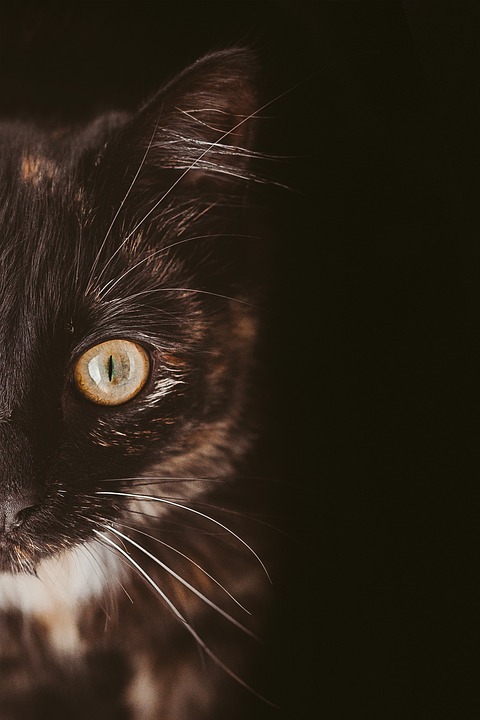Understanding Excessive Territorial Marking in Pets: Causes and Solutions
Introduction:
Cats are known for their independent and territorial nature. While some marking behaviors are normal, excessive territorial marking can become a problem for both cats and their owners. In this article, we will delve into the causes behind excessive territorial marking in pets and explore effective solutions to address this behavior. Additionally, we will provide answers to frequently asked questions to help pet owners better understand this issue.
I. What is Territorial Marking?
A. Definition and purpose
Territorial marking is a natural behavior in which cats use urine to communicate and claim their territory. It serves as a way for cats to establish boundaries and mark their presence.
B. Normal vs. excessive marking behavior
Normal marking behavior includes occasional spraying or urine marking around the house. However, excessive marking occurs when a cat engages in frequent and repetitive marking, causing disruption and inconvenience.
II. Causes of Excessive Territorial Marking
A. Hormonal factors
1. Unneutered male cats
Unneutered male cats have a strong instinct to mark their territory through urine spraying. Neutering can reduce or eliminate this behavior.
2. Unspayed female cats
Unspayed female cats may also engage in territorial marking, especially during heat cycles. Spaying can help reduce this behavior.
B. Stress and anxiety
1. Changes in the household
Moving to a new home, changes in routine, or the addition of new family members can cause stress and trigger excessive marking.
2. Introduction of new pets or people
The presence of unfamiliar pets or people in the household can disrupt a cat’s sense of territory, leading to increased marking.
3. Environmental changes
Changes in the physical environment, such as rearranging furniture or introducing new objects, can trigger marking behavior as cats try to reestablish their territory.
C. Medical issues
1. Urinary tract infections
Infections in the urinary tract can cause discomfort and increase a cat’s urge to mark their territory.
2. Feline lower urinary tract disease (FLUTD)
FLUTD is a common urinary tract disorder that can lead to excessive marking due to discomfort and inflammation.
3. Diabetes or kidney problems
Certain medical conditions can affect a cat’s urinary habits, leading to increased marking behavior.
III. Signs of Excessive Territorial Marking
A. Frequent urine spraying
Cats with excessive territorial marking will frequently spray urine on vertical surfaces, such as walls or furniture.
B. Urine marking outside the litter box
Cats may mark outside the litter box to establish territory or communicate their presence.
C. Aggression towards other pets or people
Excessive territorial marking can be accompanied by increased aggression towards other pets or even humans in the household.
D. Increased vocalization or restlessness
Cats experiencing stress or anxiety from excessive marking may exhibit increased vocalization or restlessness.
IV. Solutions to Address Excessive Territorial Marking
A. Neutering or spaying
For unneutered males and unspayed females, neutering or spaying can significantly reduce or eliminate territorial marking behavior.
B. Enriching the environment
1. Providing vertical spaces
Cats feel more secure when they have access to elevated areas, such as cat trees or shelves.
2. Offering scratching posts and toys
Providing appropriate outlets for scratching and play can help redirect a cat’s marking behavior.
3. Creating hiding spots
Creating hiding spots or cozy areas where cats can retreat and feel safe can reduce stress and decrease marking.
C. Reducing stress and anxiety
1. Gradual introductions
When introducing new pets or people, gradual introductions and positive reinforcement can help reduce stress and minimize marking behavior.
2. Consistent routines
Establishing consistent routines for feeding, playtime, and litter box maintenance can help reduce stress and create a sense of security.
3. Feliway or other calming pheromone products
Calming pheromone products, such as Feliway, can create a soothing environment and reduce stress-related marking.
D. Litter box management
1. Proper litter box placement
Ensure litter boxes are placed in quiet, accessible areas where cats feel comfortable and safe.
2. Adequate number of litter boxes
Having multiple litter boxes, especially in multi-cat households, can prevent competition and reduce marking.
3. Frequent cleaning
Regularly cleaning litter boxes and providing fresh litter can encourage cats to use them consistently.
FAQs (Frequently Asked Questions):
Q1: Is territorial marking only a male cat behavior?
A1: No, both male and female cats can engage in territorial marking, although it is more common in unneutered males.
Q2: Can medical issues cause excessive territorial marking?
A2: Yes, certain medical conditions like urinary tract infections, FLUTD, diabetes, or kidney problems can lead to increased marking behavior.
Q3: Will neutering or spaying my cat solve the territorial marking problem?
A3: In many cases, neutering or spaying can significantly reduce or eliminate territorial marking behavior, especially if the cat is not already habitually marking.
Q4: How long does it take for a cat’s marking behavior to improve with behavioral interventions?
A4: The time required to see improvements may vary depending on the cat and the underlying causes. It is essential to be patient and consistent in implementing behavioral interventions.
Q5: Should I punish my cat for territorial marking?
A5: No, punishment is not an effective solution and can lead to increased stress and anxiety, exacerbating the marking behavior. Positive reinforcement and redirecting the behavior are more helpful approaches.
Conclusion:
Excessive territorial marking in pets can be a challenging behavior to address, but understanding its causes and implementing appropriate solutions can help restore harmony in your home. By neutering or spaying, enriching the environment, and reducing stress, you can effectively manage and minimize excessive territorial marking. Remember, patience and consistency are key when modifying your cat’s behavior. If the problem persists, consult with a veterinarian or a professional animal behaviorist for further guidance.








